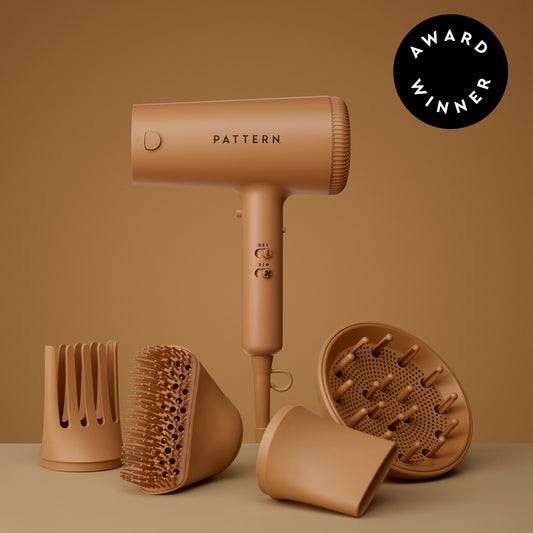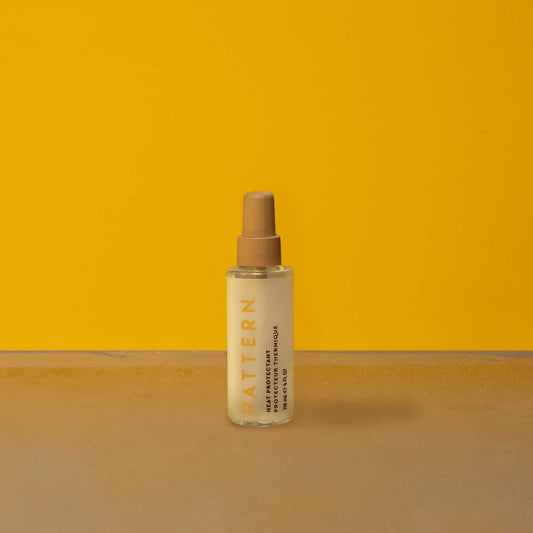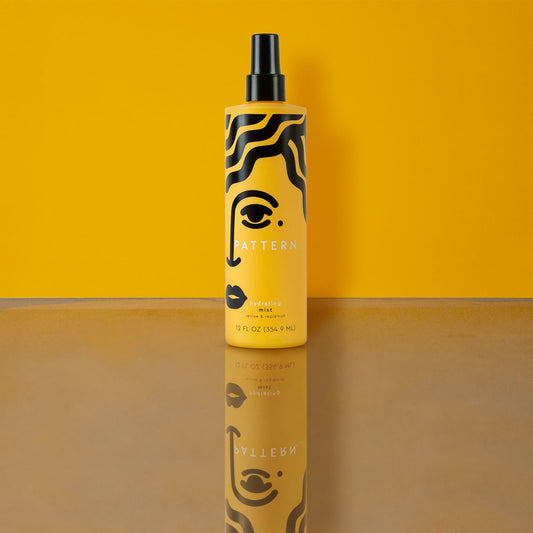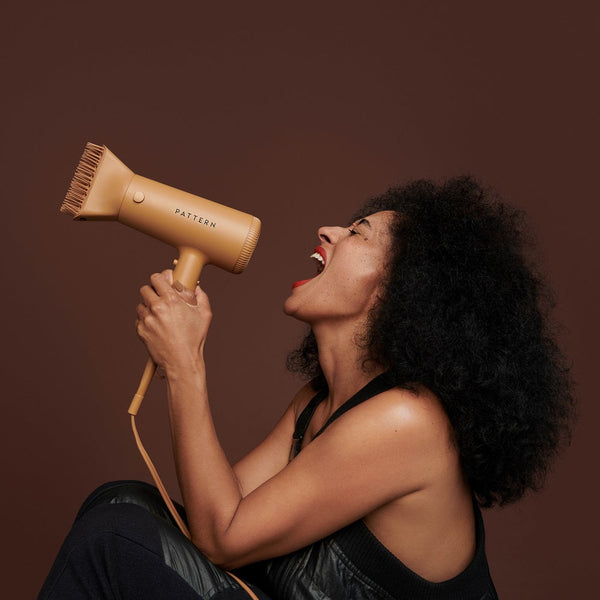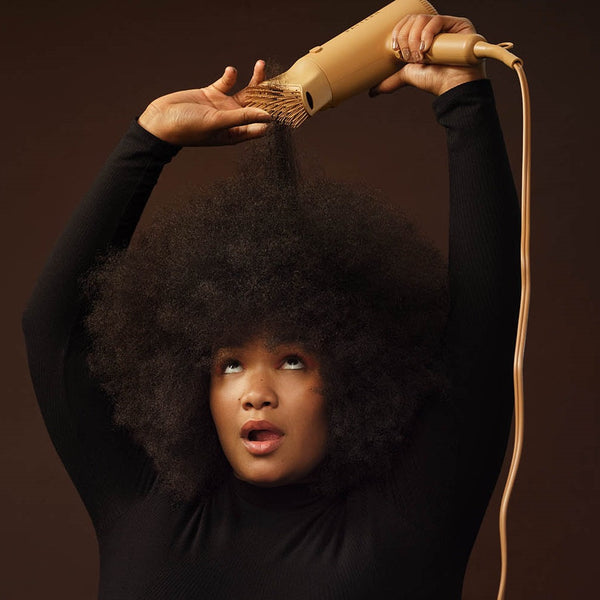From bombshell curls to gravity-defying coils, we all know what healthy, luscious hair looks like. Sometimes we rely on heat to help us achieve these looks.
Over time, this can contribute to heat damage. But what does heat damaged hair look like?
If you’re wondering about the signs of heat damaged hair, this guide was written for you. Read on as we review the most common signs of heat-damaged hair, your most frequently asked questions on the matter, & the adjustments you can make & curly hair products to use to help prevent heat damage & revitalize your luscious strands.
Qualities of Heat-Damaged Hair
How does heat damage hair look? Sometimes, identifying hair that has been damaged is as easy as tracking your heat styling tool usage. But other cases of heat-damaged hair are totally inconspicuous.
To pick heat-damaged hair out from other types of damage, identify it with these tell-tale qualities:
Split ends
Split ends top the charts for signs of heat damage. This is when the ends of your hair become frayed—or, as the name suggests, split.1 You may notice this when you come out of the shower: Split ends tend to dry faster than the rest of your hair.
Why does this happen?
Split ends are often the result of damage that’s been done to your hair cuticle,2 or the outermost, protective layer that rests on top of your cortex (where proteins, like keratin, are held). Heat is one of the biggest culprits of split ends.
How to prevent & treat it
In addition to regular haircuts, prevent heat damaged hair from surfacing by using a lush treatment mask that’s rich in nourishing ingredients. PATTERN’s Treatment Mask features moringa & rice water to undo the impact heat can have.
You should also invest in a curl-friendly brush, like PATTERN’s award-winning Shower Brush, designed to:
- Gently detangle curls
- Help curls clump together
- Define curls without breaking them
Natural hair breakage
Breakage doesn’t just happen at the ends of your hair. If you peer in the mirror & see signs of natural hair breakage throughout its length—from the crown of your hair down—you may have heat-damaged hair.
Why does this happen?
Heat can harm the keratins in your hair & alter your hair’s innate structure & elasticity. Over time, these structural changes to your hair’s natural proteins can cause your strands to become fragile & prone to snapping. Indeed, some reports show that 85% of hair damage is caused by using a flat or curling iron.3
How to prevent & treat it
How to repair heat damaged hair, you may ask? Use a heat protectant before you get your style on. Thermal protectants create a barrier between your hair’s cuticle & potentially damaging high temps. PATTERN’s Heat Protectant is specifically designed to help natural hair shift between sleek & curly styles while shielding each hair strand from further heat damage.
Dullness & dryness
If your hair looks or feels parched, or if it has lost its gleam, it may be a sign that heat has taken a toll. Indeed, if you’ve often found yourself wondering “what does heat damage look like?”, this is one of the most telltale signs.
Why does this happen?
When the cuticle of your hair gets damaged, moisture struggles to penetrate your locks & stay there. This can impact your hair’s color, shine & body.
How to help & prevent heat damage
Stay committed to quenching your hair’s thirst. Use a hydrating formula with natural ingredients that infuse moisture back into each hair strand.
For a hydrating treatment designed for natural curls, try PATTERN’s Hydrating Mist with nourishing ingredients like:4,5,6
- Aloe vera
- Coconut oil
- Avocado oil
It’s an excellent option for those times when you want to revive your hair style or give it some love between washes.
Knots & tangles
If you’ve lost the ability to run your fingers through your hair without encountering knots & tangles, you might want to reassess your hot tools & the products you have lined up in your shower.
Why does this happen?
When your hair is dehydrated from heat (or other causes), its outer layer becomes raised. This increases your curls & strands’ chances of getting entangled with each other.
How to help & prevent it
Keep in mind that your hair is at its most fragile & vulnerable when it’s wet. Post-shampoo, apply a leave-in treatment that offers ongoing nourishment before you detangle your hair.
One to try: PATTERN’s Leave-In Conditioner with sweet almond & shea oils. You might also want to indulge in a satin pillowcase or PATTERN’s Satin Cap to reduce the amount of friction your hair encounters while you sleep.
Hair loss, shedding & spots of shorter hair
The American Academy of Dermatology reports that we lose an average of 50 to 100 hairs per day.7 In other words, noting extra strands in your brush or even shower drain is totally natural.
However, if you’re starting to notice more hair coming out than usual, or seeing more of your scalp in the mirror than you’re accustomed to, you may be experiencing heat damage.
Why does this happen?
Hair loss & natural hair shedding can be caused by a handful of reasons, including hormonal changes & stress. But heat also causes wear & tear on the cuticle & can cause you to lose strands or experience shorter-than-the-rest patches of hair.
How to help & prevent it
Care for your curly hair at the root with PATTERN’s Scalp Serum. It’s dermatologist-tested & designed for you to feel it working with a satisfying tingle as it hydrates & relieves irritation.
This serum is brimming with essential oils like:
- Rosemary
- Lavender
- Peppermint
Protect Your Gorgeous Curls & Coils With PATTERN
The signs of heat-damaged hair can appear gradually over time—or appear seemingly out of nowhere. Fortunately, implementing top-shelf hot tools, like the PATTERN hair dryer for curly hair, & high-quality heat protectants from PATTERN’s new Heat Collection can urge it back into balance.
PATTERN has a wide assortment of hair care & styling products as well as tools to curb your chances of heat damage & rejuvenate hair that’s been put to the test. From our expertly-crafted Wide Tooth Combs to a Jojoba Oil Hair Mask, we have everything you need to counteract heat damage & maintain the look and feel of healthy hair
Shop our all-new Heat Collection & enter your best-hair-yet era today.
Sources:
- Rubell, Ashley. "How to know if your hair is damaged, according to the experts." Byrdie. Updated on 16 June, 2022. https://www.byrdie.com/how-to-know-if-your-hair-is-damaged-5115460
- Stanborough, Rebecca Joy. "How to identify and style your hair type." Healthline. 30 August, 2019. https://www.healthline.com/health/beauty-skin-care/types-of-hair
- Hirashima University. "Scientists shine new light on heat-damaged hair." Phys.org. 22 January, 2021. https://phys.org/news/2021-01-scientists-heat-damaged-hair.html
- Watson, Kathryn. "Aloe vera for your hair: what are the benefits?" Healthline. Updated on October 15, 2020. https://www.healthline.com/health/aloe-vera-for-hair#benefits-for-hair
- Iftikhar, Noreen. "Coconut oil for hair growth: research, efficacy, and more." Healthline. 11 December, 2019. https://www.healthline.com/health/beauty-skin-care/coconut-oil-for-hair-growth#for-the-hair
- Sissons, Claire. "Avocado oil for hair: benefits and how to use it." Medical News Today. 24 April, 2018. https://www.medicalnewstoday.com/articles/321606#benefits
- "Do you have hair loss or hair shedding?" American Academy of Dermatology. https://www.aad.org/public/diseases/hair-loss/insider/shedding

